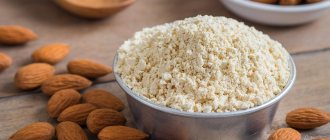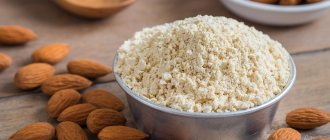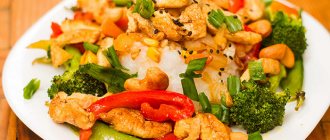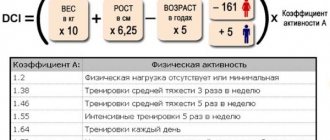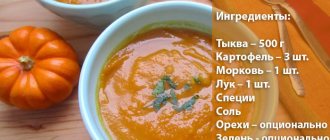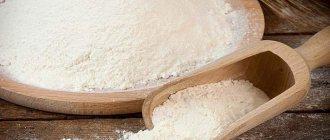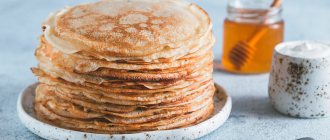Rice flour in baby food: benefit or harm
Manufacturers include it in infant formulas and cereals. Firstly, it has the property of a thickener that will not cause the slightest harm to the child’s body. Secondly, it promotes the breakdown of fructose into glucose, preventing digestive disorders due to the high content of natural sugars in fruit mixtures. And thirdly, it promotes better absorption of beneficial substances obtained by consuming mixtures.
Today, the overwhelming number of foreign manufacturers use the product in the production of baby food, but only a few use it on the domestic market. However, the absence of harm and risks of rice flour for infants, as well as a number of beneficial properties, contribute to its popularization as an ingredient in baby food among domestic manufacturers.
How to make rice flour at home
You can switch to a healthier and healthier diet by making rice flour at home. To do this, you will need a high-power blender or a professional food processor, in which you need to place the rice grains and grind.
Making your own rice flour will save not only the time required to find it, but also about 50% of its cost.
Comment! Ancient geishas used rice grinding instead of powder. Today this tradition is being revived, and the modern beauty industry also uses this recipe.
However, making such powder is not difficult at home. To do this, you need to grind premium rice and sift thoroughly. Apply to face like regular powder.
Calorie table for different types of flour
The calorie content of flour and BJU (proteins/fats/carbohydrates) varies depending on the type of product.
To select low-fat flour that is suitable for diabetics or obese patients, it is necessary to consider the beneficial properties
Common types with nutritional value:
| View | Calories (100 g) | BZHU (100 g) |
| Wheat (highest grade) | 339 | 11/1,4/70 |
| Wheat (coarse grind) | 312 | 11/1,5/65 |
| Wheat (whole grain) | 302 | 13/1,5/58 |
| Rye | 295 | 12/2/35 |
| Coconut | 456 | 20/15/60 |
| Almond | 606 | 26/54,5/13 |
| Rice | 365 | 6/1,5/85 |
| Corn | 325 | 7/2/76 |
| Oatmeal | 375 | 12/6/60 |
| Barley | 300 | 9/1/60 |
| Linen | 273 | 36/10/5 |
| Chickpeas | 389 | 22,2/7/58 |
| Buckwheat | 349 | 13,8/1/,72 |
| Pea | 292 | 9/1,7/61 |
| Pumpkin | 301 | 33/9/22 |
| Spelled | 150 | 12,/0,7/25 |
| Cheremukhovaya | 120 | 7,8/0/21 |
| Amaranth | 293 | 9/1,7/60,5 |
| Sesame | 468 | 46/12/30 |
Low-calorie varieties are bird cherry and spelled. If you are more used to wheat, it is recommended to use the whole grain variety.
What flour is good for diabetics and those losing weight?
To choose low-fat flour suitable for patients with diabetes or obesity, you need to consider the beneficial properties:
- soy – contains protein, strengthens bone and cartilage tissue, muscle corset;
- corn - contains vitamins A and E, improves bile flow, stabilizes the gastrointestinal tract, makes the vessels and arteries of the heart muscle strong and durable;
- buckwheat – stabilizes the amount of glucose in the blood;
- oatmeal – lowers cholesterol, normalizes stomach function;
- flaxseed – cleanses of decay products, toxins, starts accelerated food processing, promotes weight loss;
- coconut – accelerates the breakdown of fat cells, gives a feeling of fullness and suppresses hunger, fights constipation and stabilizes the gastrointestinal tract;
- almond – lowers cholesterol, triggers the body’s natural production of insulin, cleanses the kidneys, protects blood vessels, prevents the absorption and deposition of carbohydrates.
Advice! It is recommended to exclude wheat variety from the diet, replacing it with whole grain bran.
The benefits and harms of flour
Complete exclusion of flour from the diet is not an advisable solution, since this product has many beneficial properties:
- has high nutritional value;
- contains a large amount of proteins, fiber, vitamins and minerals;
- improves mental activity;
- increases immunity;
- has a positive effect on the blood circulation process;
- accelerates metabolism in the body;
- prevents the development of diseases of the cardiovascular system;
- reduces the likelihood of gallstones forming;
- has a positive effect on inflammatory processes, helping to reduce them at the initial stage;
- reduces symptoms of asthma and bronchitis.
Flour is considered a high-calorie product, so its main harm is associated with rapid weight gain. This applies primarily to wheat flour, which is used in baking and bakery products. Flour can also cause allergies, since some types contain gluten (many people suffer from intolerance to this protein).
How many calories are in flour
You probably don't wonder how many calories are in flour when you're cooking, right? It so happens that we are more often worried about the calories in a Charlotte or Big Tasty burger than in flour. Of course, no one would think about how many calories are in tea or a cappuccino coffee drink, and the reason for this is the belief that the drinks are completely calorie-free, and even if there are calories, they are few. Indeed, there are very few of them there, but the same cannot be said about flour.
Many women and girls have been accustomed to using wheat flour since Soviet times, because, basically, only this product could be found on store shelves. But in our time, everything has changed, and there is an incredible variety of different types of flour, the calorie content of which we will talk about below.
Is there a type among them that could replace wheat flour, cook delicious cakes with it, and at the same time lose weight? Yes, there definitely is! And what kind of species this is, you will find out below!
Wheat
Wheat flour is a product that every housewife has in her home. It is made from wheat grains, has a slight smell of bread and does not have any distinct taste at all. Its calorie content per 100 grams is 364 kcal.
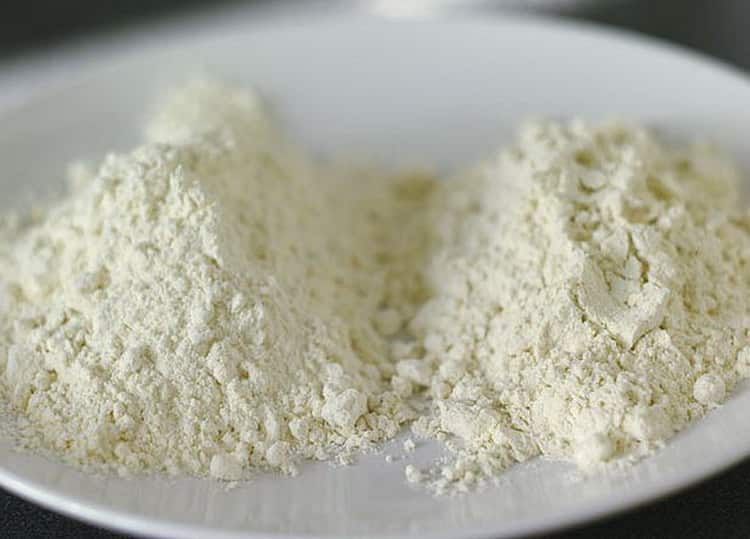
Oat
Oatmeal is usually called medicinal, because the oats from which it is made provide the body with many useful vitamins and minerals. This flour is used to prepare PP cakes, pastries and other flour sweets (PP from the phrase “proper nutrition”) - such desserts are those that have a completely natural composition, without chemical additives, and with a minimum amount of calories. And although the calorie content of oat flour is not much different from wheat flour - 369 kcal per 100 grams, it has much more benefits.
Rice
This type is also used in preparing “proper” dishes. It does not contain gluten, which means it can be safely consumed by people with allergies. This type is mainly common in Asian countries, but in recent years this flour has also begun to gain popularity here. Its calorie content per 100 grams is 366 kcal.
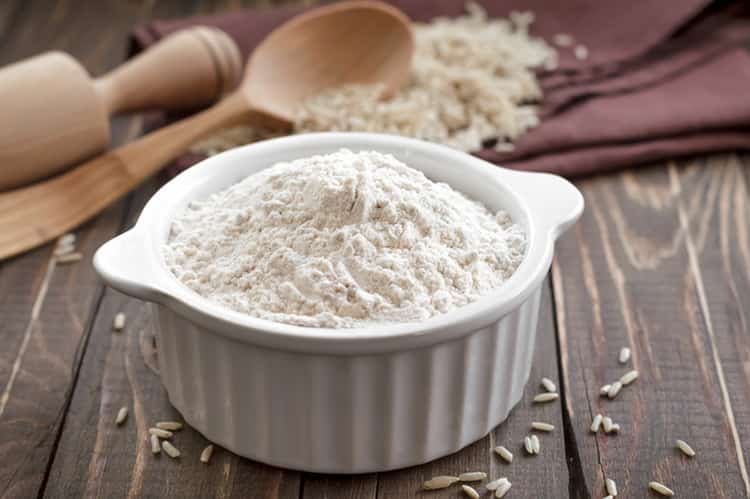
Corn
There are different versions of this flour, in some the calorie content per 100 grams is 370 kcal, in others - 330 kcal. Of course, if you see the second option on the counter, buy it without hesitation. There is not much difference between them, even if you take the higher calorie option. The fact is that corn flour retains a maximum of its beneficial components, and it is often recommended to be used in cooking for those who are on a diet due to illness or are losing weight. It is also called diet flour.
Wholegrain
This is a subtype of wheat flour that contains fewer calories than regular flour. This is approximately 340 kcal per 100 grams. This product is used to make whole grain bread and crispbreads, which are considered very healthy. They retain a maximum of substances that the body needs for normal functioning. For diet and proper nutrition, this option is definitely suitable.
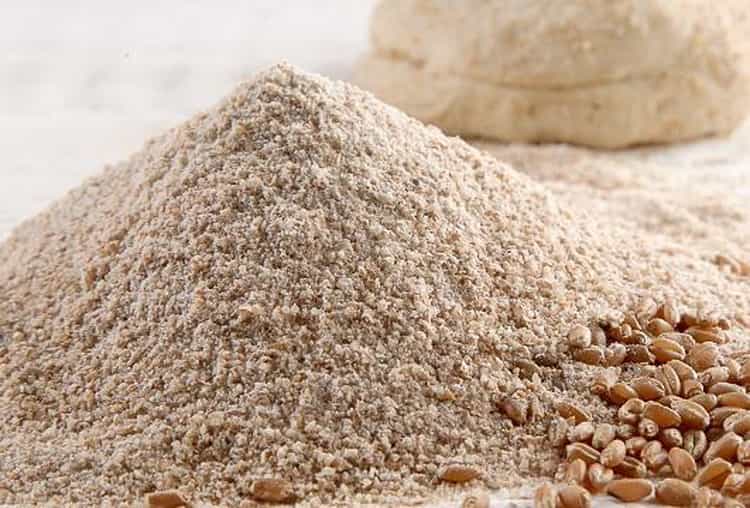
Linen
This option is considered very low-calorie, and at the same time, very healthy. The calorie content per 100 grams of flaxseed flour will be 270 kcal, and the composition contains vitamins such as A, H, E, D and the entire group of vitamins B. In addition, the composition also contains healthy fatty acids, including Omega-3 and Omega-6. An excellent choice for those who are losing weight and maintaining a healthy diet.
Rye
Everyone knows that rye bread is very healthy because it contains many vitamins and minerals. It is made from rye flour, which means it will have a beneficial effect on the human body if you make pies or cakes from it. Calorie content per 100 grams is 349 kcal.
Why do I have colored and black and white dreams?
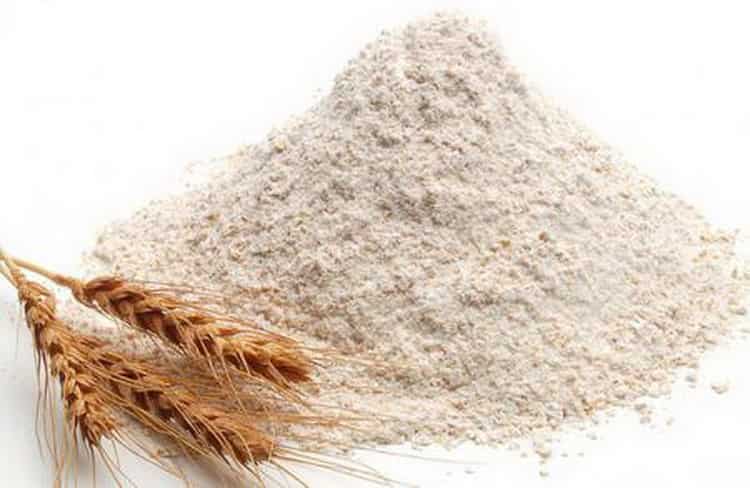
Buckwheat
Like the options described above, buckwheat flour is also actively used in dietary nutrition. It contains many vitamins, as well as iron, iodine, potassium and other useful compounds. Its calorie content per 100 grams is 353 kcal.
Coconut
Have you ever heard that coconut is used to make flour? Yes, indeed, this type also exists. Coconut flour is very similar to wheat flour in consistency, but it contains much more useful components than the usual version. However, the calorie content of coconut flour is very high - 466 kcal per 100 grams. Despite the fact that this is a fairly large indicator, this type still remains one of the most useful, even on a diet.
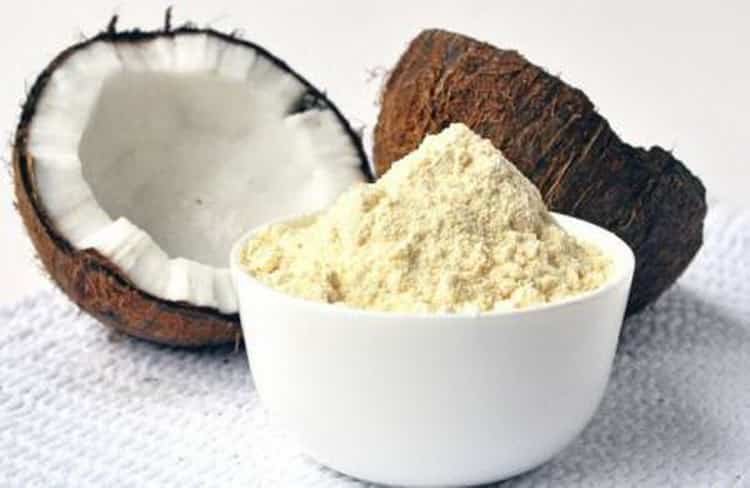
Almond
This option is very expensive, but very tasty and healthy. The famous French macarons cake is made from this flour, and believe me, you simply cannot recreate this unique taste with any other flour. The calorie content of almond flour is 602 kcal per 100 grams. Yes, the number of calories is crazy, but there will definitely be benefits from this product. And it lies in the fats that this flour contains. But, unfortunately, it is not recommended to be consumed as part of a diet.
Soy
Like any soy product, this flour is useful for those who have intolerance to all other types or an increased allergic reaction. There are two subtypes - low-fat soy flour and non-defatted soy flour. Of course, both options are suitable for dietary nutrition, but one simply contains fewer calories, while the other contains more. Low-fat soy flour has 299 kcal, and non-defatted soy flour has 385 kcal.
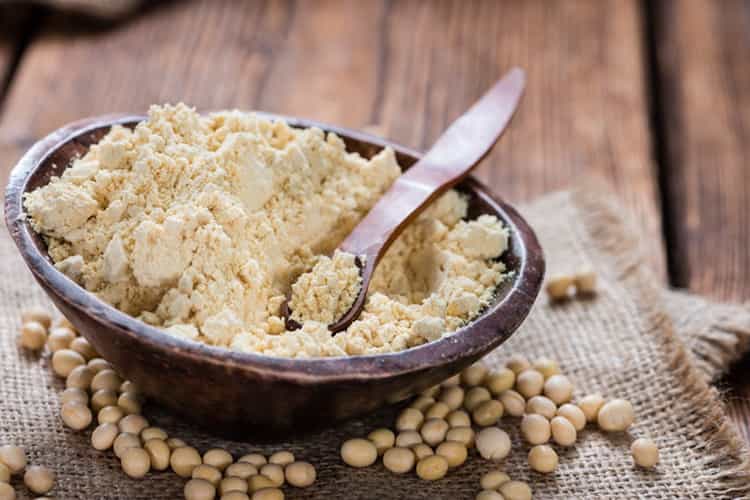
| Type of flour | Calorie content per 100 g |
| Wheat | 364 kcal |
| Oatmeal | 369 kcal |
| Rice | 366 kcal |
| Corn | 330-370 kcal |
| Whole grain | 340 kcal |
| Linen | 270 kcal |
| Rye | 349 kcal |
| Buckwheat | 353 kcal |
| Coconut | 466 kcal |
| Almond | 602 kcal |
| Soy | 299-385 kcal |
How to use rice flour
How to use rice flour? Use it for cooking! You can add it to any baked goods (preferably dietary ones!). Products made from such flour are no less tasty and soft than those made from wheat flour - you may not even feel the difference. You can use it to make cakes, pancakes, muffins, pies, and make homemade dumplings.
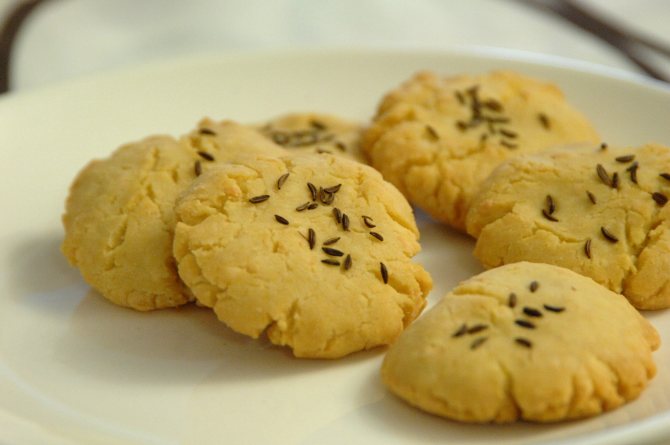
However, you won’t be able to bake bread with rice flour alone - yeast dough needs gluten, which this product does not contain. For such baking, rice flour is mixed with any other flour that contains gluten. But if you follow a dietary regime, it is advisable to completely abandon yeast baked goods.
It is also added to dishes to keep their shape (for example, cutlets). Or used as a thickener in homemade sauces. Flour from these cereals is such a safe product that it is even used instead of a thickener in infant formula.
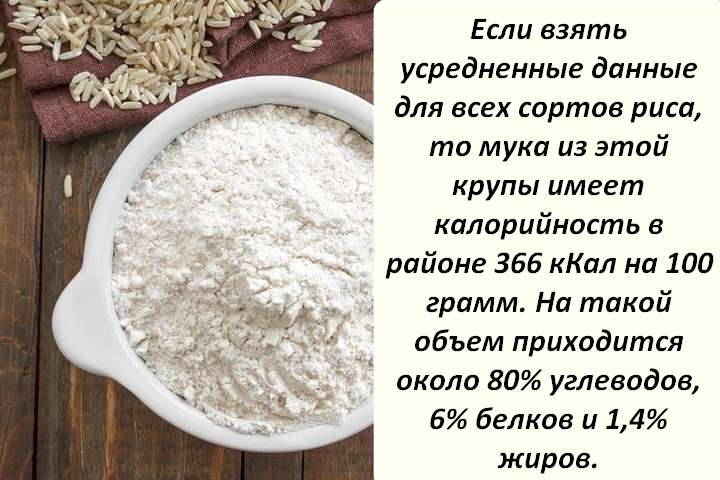
Remember that any flour should be consumed in moderation - be it wheat, rice or whole grain. This is a very high-calorie and starchy product, the uncontrolled consumption of which will lead to weight gain. This is especially true for baking - it should be reduced in the diet of those losing weight. It is not advisable to consume more than 80 g of rice flour (in its pure form) per meal.
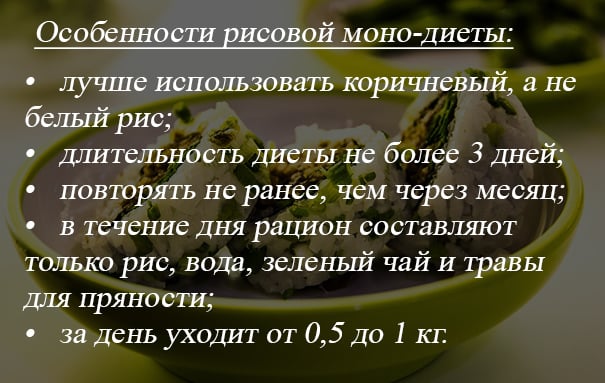
Interesting! You can make rice flour yourself - the preparation process does not take much time. You just need to prepare raw grains of white or brown rice, rinse them and dry them completely on paper. Then grind the rice in a coffee grinder or blender until it becomes a powder. It is advisable to store flour for no longer than 5 months.
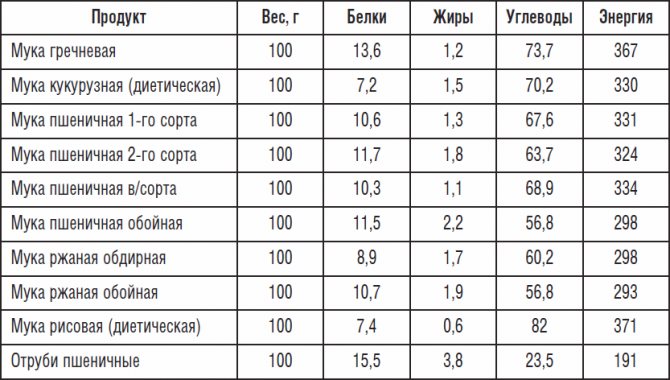
Now that we have understood the benefits and harms of rice flour for weight loss, we can draw a final conclusion - such flour will be a healthier alternative to wheat flour and, if consumed in moderation, will not harm your figure. Therefore, even on a diet and proper nutrition, you can sometimes treat yourself to healthy and tasty pastries!
Interesting: Diet baking for weight loss
Write in the comments: Do you use rice flour for cooking?
Product calculator
Enter the amount of Rice Flour to calculate its nutritional value
| Property | Meaning | % of normal | |
| Calorie content, kcal | 366 | 18.3 | 18.3% |
| Proteins, g | 5,95 | 3.33 | 3.33% |
| Carbohydrates, g | 77,73 | 30.8 | 30.8% |
| Fats, gr | 1,42 | 2.27 | 2.27% |
Why is white wheat flour harmful?
Wheat flour does more harm than good. Regardless of the variety, it does not exclude dietary fiber, affects health and leads to weight gain.
This simple, refined product contains gluten, a protein derivative of gluten, which glues the contents of cereals together and causes diseases.
Note! With regular consumption of dough made from premium flour, people may eventually develop celiac disease, that is, gluten intolerance, for this reason it is important to reduce the frequency of their use and monitor nutrition.
The gluten content will depend on the variety and grinding of the product: usually it is higher in premium varieties.
What to cook with flour
You can prepare many different dishes from flour, but we decided to tell you about the simplest ones. You can easily prepare any of these dishes yourself; to do this, choose the flour you like and follow our recipes. Bon appetit!
Pancakes
Calorie content: 227 kcal per 100 grams.
| Milk | 2.5 glasses |
| Flour | 1.5 cups |
| Eggs | 2 pcs. |
| Sugar | 1 tsp. |
| Salt | 0.5 tsp. |
| Vegetable oil | 3 tbsp. l. |
Cooking process:
- Mix milk, eggs, sugar and salt with a mixer.
- Add butter and continue beating with a mixer until smooth.
- Add flour and mix well.
- Fry in a frying pan with a little oil on both sides for 1-2 minutes.
- Ready! Serve with jam, condensed milk or sour cream!
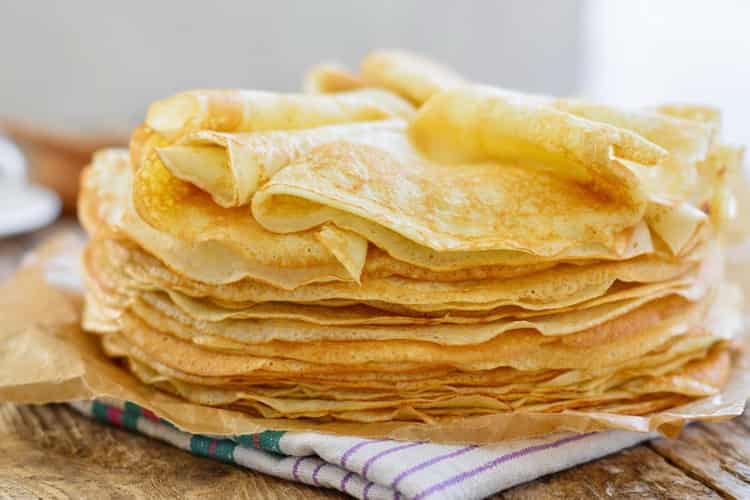
Cupcakes
Calorie content: 300 kcal per 100 grams.
| Cocoa | 2 tbsp. l. |
| Milk | 5 tbsp. l. |
| Sugar | 4 tbsp. l. |
| Flour | 4 tbsp. l. |
| Baking powder | ¼ tbsp. l. |
| Vegetable oil | 3 tbsp. l. |
| Vanilla sugar | taste |
| Eggs | 1 PC. |
Cooking process:
- Beat egg, sugar and vanilla sugar with a fork.
- Add milk, butter and baking powder. Mix well.
- Gradually add flour and cocoa, stirring.
- Pour into molds and place in an oven preheated to 180 degrees.
- In 6-7 minutes the cupcakes are ready!
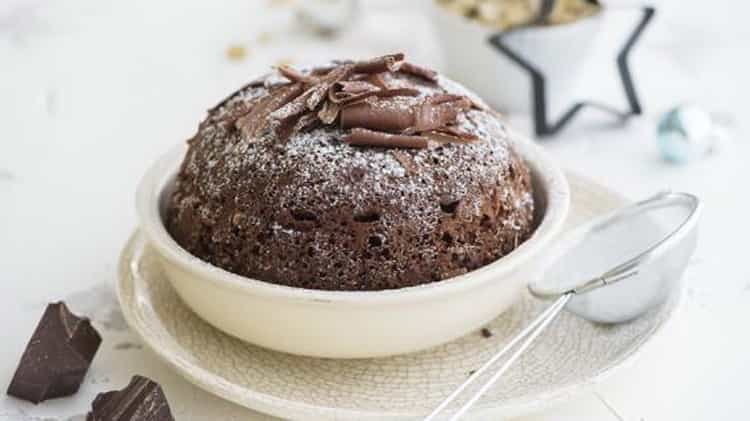
Flatbread
Calorie content: 226 kcal per 100 grams.
| Flour | 1 kg |
| Salt | 1 tbsp. l. |
| Yeast | 2 tbsp. l. |
| Water | 200 ml |
Cooking process:
- Sift the flour and prepare the yeast. To do this, mix the yeast with 2 tablespoons of flour and dilute in ½ cup of warm milk (or water). Place the finished mixture in a warm place and wait for it to rise.
- When the mixture rises, add the remaining water, salt and flour. Cover with a towel and let the dough rise.
- When the dough is ready, you need to grease it on both sides with oil and put it in the oven, tightly covering the top with something heavy (a frying pan, for example).
- Bake at 200 degrees for 10 minutes, then remove, turn over, cover with a frying pan and bake for another 10 minutes.
- Ready!
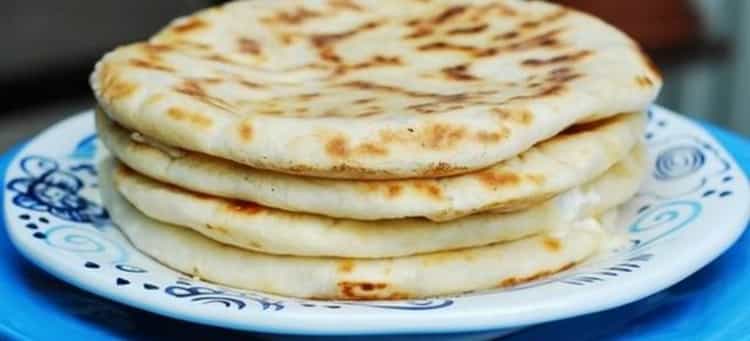
Application in cosmetology
Using rice flour, you can make various whitening and cleansing masks and scrubs. It is often used to remove freckles and age spots. Its successful use in the field of cosmetology is primarily due to the fact that rice is a natural antioxidant and is able to absorb and remove harmful and dangerous substances from the body. It is also able to maintain water-salt balance and remove excess fluid. Such properties are simply irreplaceable in the cosmetics industry.
Rejuvenating face mask
The use of this product will tighten the skin, prevent the appearance of wrinkles, and improve tone. After such a mask, it will look smooth and elastic.
For the mask you will need:
- rice flour – 1 teaspoon;
- sour cream – 1 dessert spoon;
- mixture of egg yolk and white - 1 teaspoon.
Mix all ingredients until a homogeneous mass appears. Apply to previously cleansed facial skin, hold for 20 minutes, and after finishing the procedure, rinse with warm water.
Body scrub with rice flour
To prepare you will need:
- rice flour;
- ground coffee.
Mix the ingredients in equal parts and dilute with milk to the consistency of thick sour cream. Apply the product to the body from bottom to top, delicately rubbing the skin with soft circular movements. Do not tear or scratch the skin under any circumstances. After 15-20 minutes, rinse off any remaining product under a warm shower.
Walnuts with honey: benefits and harms
After this procedure, the skin will glow, become tightened and more elastic.
Rice flour in home cosmetology
Rice flour is often used to prepare facial products. This is a fairly popular ingredient for making homemade cosmetic masks. It has the property of absorbing pollution, harmful substances, and rice flour will help get rid of wrinkles and skin imperfections.
Rejuvenating facial mask with rice flour
This mask is useful against wrinkles.
Components:
- main ingredient – 2 tbsp. l.;
- honey – 1 tsp;
- olive oil (almond oil is possible) – 2 tsp;
- sour cream or heavy cream.
Application:
- Mix honey and butter until smooth.
- Add grinding and dilute with sour cream or cream to the consistency of thick cream.
- Apply to face and décolleté for 15–25 minutes.
- Repeat 2-3 times a week for a month.
Nourishing and whitening face mask
Thanks to the smallest granules, ground rice easily exfoliates dead skin cells; this useful property is used in the preparation of whitening masks.
Scrubs with rice flour for face and body
Due to its structure, this beneficial substance makes wonderful scrubs.
For hands
Components:
- main ingredient – 1 tbsp. l.;
- water – 2 tbsp. l.;
- cosmetic oil - a few drops.
Application:
- Mix all ingredients.
- Apply to skin and massage a little.
- Rinse with water.
For body
The skin on the body is more delicate than on the hands, so the scrub should be softer: 1 tbsp. l. grinding you need to take 4 tbsp. l. water, add a little more cosmetic oil and a single portion of shower gel.
Important! It is better to apply the scrub to the skin without using a washcloth.
Rice flour hair shampoo
The substance will also be very useful for hair due to its adsorbing properties.
You can use it to your advantage in the following ways:
- Using rice water to rinse your hair after washing. To do this, add water to the rice and leave for 2-3 days.
- Use as a dry shampoo (especially for blonde hair).
- Preparation of mixture for washing hair: 3–5 tbsp. Pour warm water over a tablespoon of ground rice and stir until liquid. Apply to hair, starting from the roots. Leave for 2-3 minutes. to saturate hair with useful substances. Rinse thoroughly with a solution of water and lemon juice (1 tablespoon of lemon juice per 1 liter of water).
The nutritional value
Rice flour, the benefits and harms of which are completely justified and argued, is considered a fairly high-calorie product. The nutritional value and calorie content of white and brown rice are slightly different.
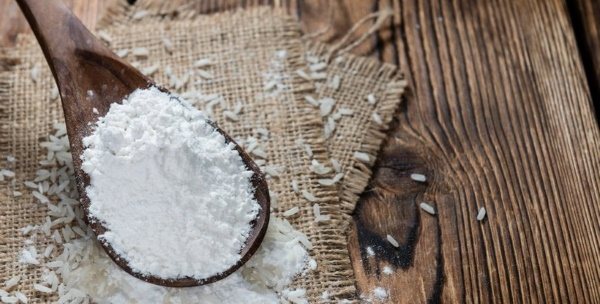
| Kcal (per 100 g) | Carbohydrates | Squirrels | Fats |
| White flour – 366 kcal | 80 g | 5.9 g | 1.4 g |
| Brown flour – 360 kcal | 76.5 g | 7.2 g | 2.8 g |
Fiber content per 100 g: white flour – 2.4 g, brown flour – 4.6 g.
Use in home medicine
Rice flour has also found its use in folk medicine. In Asia, products based on this cereal have been used for a long time, knowing its beneficial healing qualities. In Japan, it is believed that if you eat two tablespoons of raw rice or flour made from this cereal at breakfast, you can get rid of significant intestinal problems and forget about abdominal pain.
A compress of boiled rice flour and vinegar is used for bruises, sprains and insect bites. And hard-boiled rice water without adding salt is an excellent remedy for diarrhea. To do this, you need to mix rice flour with goat lard and use it as food for chronic stomach and intestinal upsets.
Is it possible to lose weight on flour products?
We have already highlighted above several types of flour that would be ideal for those who are on a diet due to illness or a desire to lose weight. In fact, even on wheat flour you can remain slim and beautiful. We've done some research and decided to share with you some interesting facts and tips from nutritionists and food industry experts.
- If you don’t want to replace wheat flour with something more expensive and healthy, it doesn’t matter. You can always buy coarse or second grade wheat flour. It contains more useful elements, and at the same time, a very small amount of carbohydrates.
- The composition of rye flour is considered very good due to the balance of proteins, fats and carbohydrates. However, there is a point that can put you off from using this flour - a specific taste. Moreover, the dough from this flour does not always turn out the way we are used to seeing it. It is best to use this flour for making sourdoughs - there it will show its qualities best.
- Even though rice flour does not contain gluten, it still remains high in calories. If you are on a diet but have a gluten allergy, replace rice flour with soy or corn flour.
- You can make your own oatmeal from oatmeal. It makes very tasty desserts, and if you prepare the “right” cream for diabetics and those losing weight, you will get a real PP cake!
- It is worth remembering that no matter what flour you use, you need to eat dishes with it in the first half of the day, even if it is dietary flour. As a rule, there is no specific norm for using flour. You can only abuse this product if your diet consists entirely of flour-based dishes. This way, you don’t have to worry about overdoing it with this product.

Flour composition
Now is the time to understand the nutritional and energy value of each type of flour. Below is a table with all the data on proteins, fats and carbohydrates.
| Type of flour | Calorie content per 100 g | Proteins +% of normal | Fats +% of normal | Carbohydrates +% of normal | Alimentary fiber |
| Wheat | 364 kcal | 13.2 g (16.1%) | 2.5 g (3.85%) | 61.3 g (47.89%) | 10.7 g (0.42%) |
| Oatmeal | 369 kcal | 13 g (15.85%) | 6.8 g (10.46%) | 64.9 g (50.7%) | 4.5 g (22.5%) |
| Rice | 366 kcal | 6 g (7.32%) | 1.4 g (2.15%) | 77.7 g (60.7%) | 2.4 g (12%) |
| Corn | 330-370 kcal | 7.2 g (8.78%) | 1.5 g (2.31%) | 72.1 g (56.33%) | 4.4 g (22%) |
| Whole grain | 340 kcal | 7 g (8.54%) | 0.6 g (0.92%) | 78 g (60.94%) | 0 g (0%) |
| Linen | 270 kcal | 25 g (30.49%) | 5 g (7.69%) | 40 g (31.25%) | 0 g (0%) |
| Rye | 349 kcal | 10.7 g (13.05%) | 1.9 g (2.92%) | 58.5 g (45.7%) | 13.3 g (66.5%) |
| Buckwheat | 353 kcal | 13.6 g (16.59%) | 1.2 g (1.85%) | 71.9 g (56.17%) | 2.8 g (14%) |
| Coconut | 466 kcal | 3.5 g (4.27%) | 1.5 g (2.31%) | 9 g (7.03%) | 0 g (0%) |
| Almond | 602 kcal | 25.8 g (31.46%) | 54.5 g (83.85%) | 13 g (10.16%) | 0 g (0%) |
| Soy fat-free | 299 kcal | 48.9 g (59.63%) | 1 g (1.54%) | 21.7 g (16.95%) | 14.1 g (70.5%) |
| Soy non-fat | 385 kcal | 36.5 g (44.51%) | 18.6 g (28.62%) | 17.9 g (13.98%) | 13.3 g (66.5%) |
The chemical composition of each type of flour is different, and above we have already described several options for what may be included in this or that flour. Accordingly, depending on its components, each type of flour provides the body with different benefits, but some points are completely the same, so we invite you to familiarize yourself with the benefits of any type of flour for the human body. Here are some important properties of this product:
- stabilizes intestinal function;
- improves immunity;
- improves the functioning of the nervous system;
- saturates the body with vitamins;
- stimulates mental activity;
- improves the condition of hair and nails;
- promotes skin regeneration.
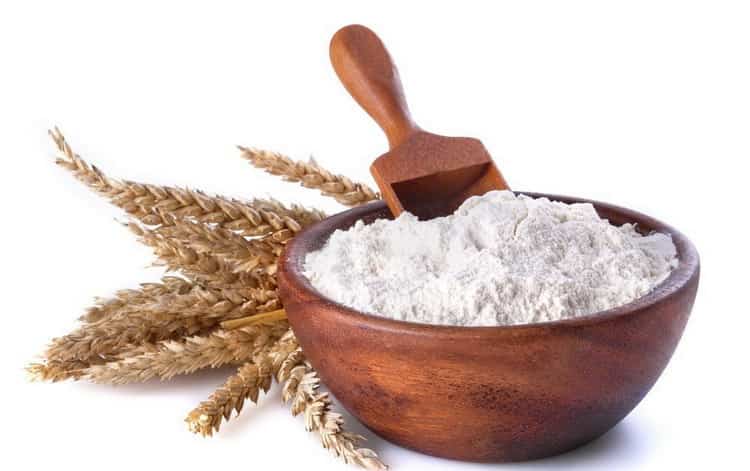
Chemical composition
The chemical composition of flour depends on the grain from which it was made.
It contains the following substances:
- proteins (gluten, proteins, albumins, glutelins, plolamins);
- amino acids (glutamine, leucine, proline);

- carbohydrates - such as starch, fiber, hemicellulose, polysaccharides, as well as small amounts of fructose and glucose;
- lipids;
- fatty acids (linoleic, oleic, linolenic);
- phosphoric and silicic acids;
- vitamins E, A, PP and group B;
- minerals (phosphorus, magnesium, calcium, potassium);
- trace elements (zinc, manganese, copper, iron);
- enzymes (proteinases, amylases, lipase and others).
Each type of flour has certain features of its composition, which are presented in the table below:
| Type of flour | Features of the composition |
| Rice | Gluten-free, rich in vegetable protein, lecithin and B vitamins. Helps cleanse the body of toxins and waste. |
| Oatmeal | Rich in mucous components that normalize the functioning of the digestive tract. The product does not contain gluten. Flour contains silicon, which is responsible for metabolic processes in the body. |
| Buckwheat | Contains a lot of copper and iron, which helps maintain normal hemoglobin levels in the blood. There is no gluten in flour. |
| Corn | Contains a lot of fiber, potassium, vitamins A, B and E, improves bone and connective tissue, normalizes the flow of bile. |
| Rye | Contains a large amount of lysine. The product contains 50% more magnesium and potassium than wheat flour. |
Interesting facts about rice
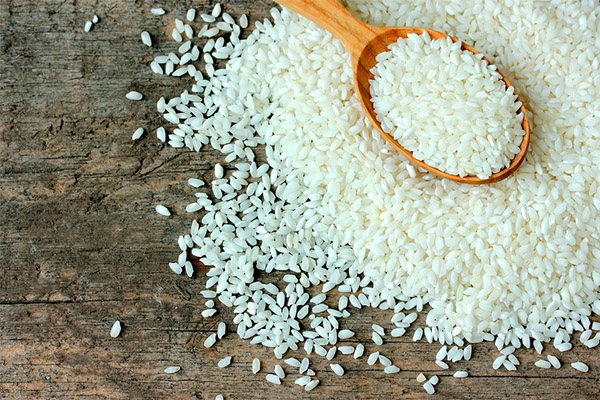
- Rice is a very durable material. During the feud between China and the Mongol tribes during the construction of the Great Wall of China, rice flour was added to the mortar to make it stronger. The same technology was used for many years in the construction of houses and the creation of bricks.
- In health food stores you can find wild black rice flour. You need to understand that this is the name of a plant that actually has nothing in common with the original cereal, so the beneficial properties of rice will not apply to black flour.
- Rice flour has been used as an antibacterial powder for centuries. This tradition was started by geishas, after which it was picked up by aristocrats, artists, and then by all the beauties of Asia. Today, rice flour can be found among the components of powder products. It keeps pores tight, protects the skin from impurities and relieves irritation.
Rice flour is a completely safe and affordable product that will help maintain health and diversify your diet, so try new recipes with pleasure!
How to choose and store correctly
The first thing you should pay attention to when choosing a product in a store is the integrity of the packaging. Deformation may be a sign of product spoilage due to improper storage. It is also necessary to study the manufacturing date of the product. The shelf life of rice flour is no more than six months.
The finished product should be stored in a dry, dark and cool place. It is advisable to use glass containers with a tight-fitting lid for storage.
conclusions
Rice flour today is almost as in demand as wheat or rye flour. Its beneficial properties are valued in the medical industry, cosmetology and cooking. The nutritional value of the product and its ability to cleanse the body of harmful substances and remove excess moisture from it are in demand in dietary programs. One of the main reasons for the popularity of rice flour is its hypoallergenicity, due to the fact that its composition completely lacks a specific plant protein - gluten. Rice flour is used to make excellent desserts and is widely used in the confectionery industry. They make rice bread, rice paper, and rice noodles from it, which are very popular not only in Asian cuisine, but also in Europe. However, there are some contraindications to the use of this product, such as frequent constipation or stomach cramps. Rice flour is also contraindicated for people prone to obesity. But if you use it in moderation, then there is simply no need to talk about harm to the body.
Types of flour
You should not completely give up this product; you can consume it in reasonable quantities for the benefit of the body. Different types of flour have their own calorie content and nutrient composition. Several types of flour are produced only from wheat grain, differing in nutritional value:
- premium quality;
- 1 grade;
- 2 varieties;
- whole grain.
The healthiest of all types of wheat flour is whole grain flour, as it retains all the valuable properties, vitamins and minerals of wheat grains. It is recognized as dietary and is often used for weight loss because it contains a lot of protein, carbohydrates and very little fat. Premium flour is higher in calories and contains much less protein and fiber.
As for other varieties, bird cherry and spelled are considered to be the lowest in calories. Their calorie content does not exceed 150 calories per 100 grams.
Bird cherry flour is produced by grinding dried bird cherry fruits and retains all the beneficial substances contained in the berry: organic acids, antioxidants, tannins and vitamins C and P. It has very few carbohydrates and no fats. Spelled is made from a crop belonging to the wheat family, but, unlike the latter, it contains almost 3 times less carbohydrates, and the fats included in its composition are easily absorbed by the body. Both types are considered dietary and useful for weight loss and for people with diabetes.
Flaxseed flour is also considered very valuable, as it contains a lot of protein and a minimum of carbohydrates and fats.
One of the most original types of flour is rice flour. Desserts and baked goods made from it have an unusual and delicate taste, but despite its low calorie content, it contains a lot of carbohydrates and very little protein and fat. Therefore, it is useful as part of dietary dishes.
Almond flour is considered to be the highest calorie flour of all types. Its calorie content is more than 600 calories per 100 grams. It contains almost no carbohydrates, but includes proteins and a lot of fats, which are easily digestible and contain fatty acids that are beneficial to the body.
A tablespoon of almond flour contains about 60 kcal. Therefore, desserts and baked goods made from it are considered the most harmful for the figure.
